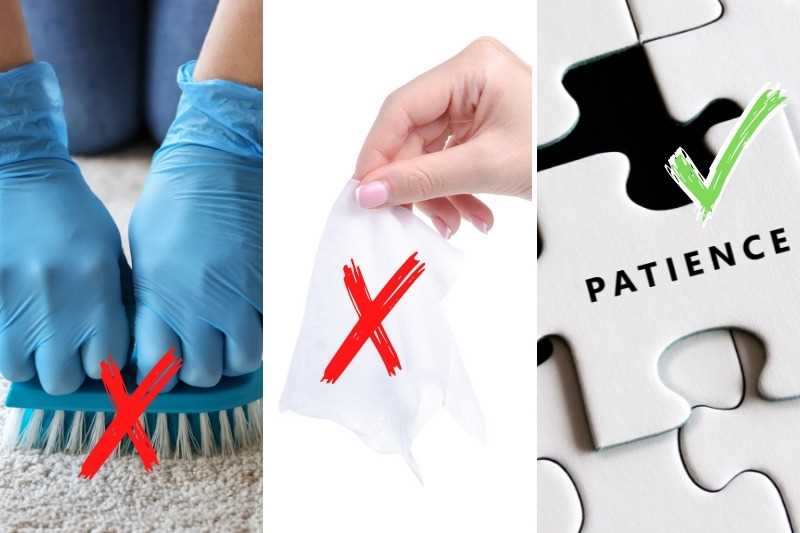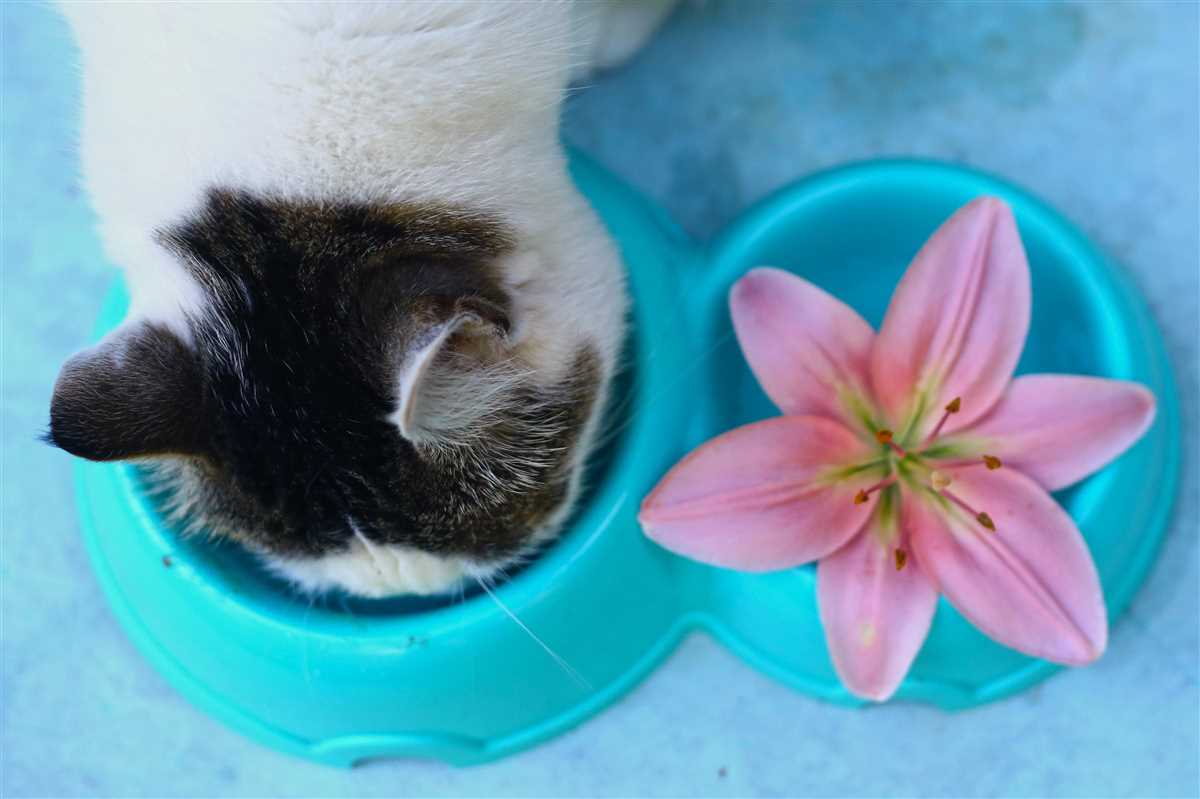




Lily flowers are renowned for their beauty and fragrance, but they can also leave an unwanted mark on your carpet. Lily pollen is known for its ability to stain fabrics, and if you’re not careful, you may find yourself with a stubborn yellow stain on your carpet. Fortunately, there are several effective methods for removing lily pollen from your floor covering.
One of the first steps you should take is to act quickly. As soon as you notice the pollen on your carpet, gently remove any excess pollen using a spoon or a vacuum cleaner with a brush attachment. Be careful not to rub the pollen into the fibers, as this will only make the stain worse. The key is to remove as much of the pollen as possible before it has a chance to set in.
Once you have removed the excess pollen, avoid using water or any liquid cleaning solutions on the stain. Water can cause the pollen to spread and potentially make the stain larger. Instead, reach for a piece of sticky tape. Carefully press the tape onto the stain and then lift it up. Repeat this process until you have removed as much pollen as possible. This method works because the sticky surface of the tape attracts and lifts the pollen off the carpet fibers.
If the stain is still visible after using tape, consider using a commercial stain remover specifically designed for pollen stains. Make sure to follow the instructions on the product carefully and test it on a small, inconspicuous area of your carpet first. Apply the stain remover to the stain using a clean cloth or sponge, and gently blot the area. Avoid rubbing the stain, as this may cause it to spread further. Once the stain has been removed, rinse the area with water and blot dry.
Methods for Removing Lily Pollen from Carpet

Vacuuming
The first step in removing lily pollen from your carpet is to vacuum the affected area. Use a vacuum cleaner with a brush attachment to gently lift the pollen particles from the carpet fibers. Be careful not to rub the pollen deeper into the carpet.
Tape Method

If the pollen is still visible on the carpet after vacuuming, you can use the tape method to remove the remaining particles. Take a piece of transparent adhesive tape and press it onto the pollen. Gently lift the tape, pulling the pollen particles away from the carpet. Repeat this process until no more pollen is visible on the tape.
Damp Cloth
If the pollen has been ground into the carpet fibers, you can try using a damp cloth to remove it. Dampen a clean white cloth with lukewarm water and gently dab the affected area. Avoid rubbing the pollen as this may cause it to spread. Continue dabbing until no more pollen can be seen on the cloth.
Isopropyl Alcohol

If the above methods are not effective, you can try using isopropyl alcohol to remove the lily pollen stain. Moisten a clean cloth with isopropyl alcohol and gently blot the stained area. Be sure to test the alcohol on an inconspicuous area of the carpet first to ensure it does not cause any damage or discoloration.
Professional Carpet Cleaning
If all else fails or if the pollen stain is particularly stubborn, consider hiring a professional carpet cleaning service. They have specialized equipment and expertise to effectively remove tough stains like lily pollen from carpets. Contact a reputable carpet cleaning company to schedule an appointment.
- Vacuum the affected area to remove loose pollen particles.
- Use transparent adhesive tape to lift remaining pollen from the carpet.
- Dampen a cloth with lukewarm water and dab the stain.
- If needed, try using isopropyl alcohol to remove the stain.
- Consider hiring a professional carpet cleaning service for stubborn stains.
Vacuuming

Vacuuming is one of the most effective and efficient methods for removing lily pollen from carpets. Here are some tips on how to properly vacuum your carpet to remove lily pollen:
- Choose the right vacuum cleaner: Make sure you have a vacuum cleaner that has enough suction power to effectively remove the pollen from the carpet fibers. A vacuum cleaner with a HEPA filter is also recommended to capture any airborne pollen particles.
- Use the correct attachments: Attachments such as a crevice tool or upholstery brush can help you reach deep into the carpet fibers and remove pollen that may be trapped.
- Vacuum regularly: Regular vacuuming can prevent pollen from settling into the carpet fibers and becoming more difficult to remove. Aim to vacuum at least once a week or more frequently during allergy season.
- Start with dry cleaning: Before using any liquid cleaning products, dry clean your carpet to remove as much pollen as possible. This can be done by using the vacuum cleaner without any cleaning solutions or water.
- Use a high suction setting: Adjust your vacuum cleaner to the highest suction setting to effectively remove pollen from the carpet fibers.
- Slow and steady: Take your time while vacuuming and move the vacuum cleaner slowly over the carpet. This will allow the vacuum cleaner to effectively pick up the lily pollen.
- Empty and clean the vacuum cleaner regularly: To prevent pollen from being released back into the air, empty the vacuum cleaner bag or canister regularly and clean the filter as recommended by the manufacturer.
Remember, regular vacuuming is key to keeping your carpet pollen-free and preventing allergies. By following these vacuuming tips, you can effectively remove lily pollen from your carpet and maintain a clean and healthy indoor environment.
Use Sticky Tape
If you have lily pollen on your carpet, one effective method for removing it is to use sticky tape. This method is simple and doesn’t require any special tools or cleaning agents.
To start, you’ll need a roll of clear or transparent tape. Scotch tape or packing tape works well for this purpose. Cut off a piece of tape that is long enough to cover the area with pollen.
Hold one end of the tape and carefully position it over the pollen. Press down gently to make sure the pollen sticks to the tape.
Once the tape has picked up the pollen, slowly lift it off the carpet. Be careful not to touch any other areas of the carpet with the tape to avoid spreading the pollen.
If the pollen is stubborn and doesn’t come off easily, you can try using another piece of tape to lift off any remaining pollen. Repeat this process as needed until the pollen is completely removed.
Dispose of the used tape and any pollen in a trash bag. Make sure to seal the bag tightly to prevent the pollen from spreading.
Using sticky tape is a quick and efficient way to remove lily pollen from your carpet. It’s also a handy method to have in case of any other small spills or messes on your carpet.
Freeze the Pollen

If you notice fresh lily pollen on your carpet, one effective method for removing it is to freeze it. Gathering the following supplies will help you tackle this task:
- A clean cloth or paper towel
- A plastic bag
- An ice cube or an ice pack
Follow these steps to freeze the pollen:
- Use the clean cloth or paper towel to gently blot the lily pollen. Be careful not to rub it, as this may cause it to smear deeper into the carpet fibers.
- Place the cloth or paper towel with the pollen in a plastic bag. Seal the bag to prevent pollen from spreading.
- Take an ice cube or an ice pack and place it on top of the plastic bag. The cold temperature will freeze the pollen, making it easier to remove.
- Leave the ice cube or ice pack on the carpet for about 15-20 minutes to allow the pollen to freeze.
- After the allotted time, remove the ice cube or ice pack, as well as the plastic bag with the pollen.
- Use a vacuum cleaner or a soft-bristle brush to gently remove the frozen pollen from the carpet fibers.
Repeat the process if any pollen remains on the carpet. Remember, it’s important not to apply too much pressure while removing the pollen to avoid pushing it deeper into the carpet.
If the pollen stain persists or if you are unsure about removing it yourself, it’s recommended to consult a professional carpet cleaner who can provide guidance and expertise in stain removal.
Blot with Rubbing Alcohol

If you have lily pollen stains on your carpet, one effective method to remove them is by blotting the stain with rubbing alcohol. Rubbing alcohol has properties that can help break down the pollen and lift it from the carpet fibers.
- First, gather the necessary materials: rubbing alcohol, clean white cloth or paper towels, and a vacuum cleaner.
- Start by gently blotting the stain with a clean white cloth or paper towels. Avoid rubbing the stain, as this can spread it further.
- If the stain is fresh, use a spoon or a butter knife to scrape off any excess pollen from the carpet surface. Be careful not to push the stain deeper into the carpet fibers.
- Next, pour a small amount of rubbing alcohol onto a clean white cloth or paper towel.
- Gently dab the stained area with the rubbing alcohol-soaked cloth. Start from the outer edges of the stain and work your way towards the center. This will prevent the stain from spreading.
- Continue blotting until the pollen stain is no longer visible on the cloth.
- Once the stain has been removed, use a clean cloth or paper towel to blot the area with plain water. This will help remove any residue left behind by the rubbing alcohol.
- Finally, allow the carpet to air dry. If needed, you can use a fan or open windows to help expedite the drying process.
- Once the carpet is dry, vacuum the area to restore the carpet fibers and remove any remaining particles.
Note: It is important to test the rubbing alcohol on a small, inconspicuous area of the carpet before applying it to the stain. This will ensure that the rubbing alcohol does not cause any discoloration or damage to the carpet fibers.
By following these steps, you can effectively remove lily pollen stains from your carpet using rubbing alcohol. Remember to act quickly, as pollen stains can set into the carpet fibers if left untreated for too long.
Hire Professional Carpet Cleaners
If you have tried various methods to remove lily pollen from your carpet without success, it may be time to consider hiring professional carpet cleaners. They have the knowledge, experience, and specialized equipment to effectively remove pollen and other stubborn stains from your carpet.
Professional carpet cleaners have access to powerful vacuum cleaners that can remove even the tiniest particles of pollen from deep within the carpet fibers. They also use safe and effective cleaning solutions that can lift stains without damaging the carpet.
When you hire professional carpet cleaners, you can be confident that they will use the right techniques and products for your specific carpet type. They will assess the condition of your carpet and choose the most appropriate cleaning method to ensure the best results.
In addition to their expertise, professional carpet cleaners can save you time and effort. They will take care of all the cleaning tasks, so you can focus on other important things in your life. You won’t have to worry about purchasing expensive carpet cleaning products or spending hours trying to remove pollen stains.
Furthermore, professional carpet cleaners can help prolong the life of your carpet. Regular cleaning can prevent staining and wear, keeping your carpet looking fresh and extending its lifespan. By investing in professional carpet cleaning, you are also protecting your investment in your home.
Before hiring professional carpet cleaners, it’s important to research and choose a reputable company. Read customer reviews, ask for recommendations from friends or family, and inquire about their cleaning methods and pricing.
Remember, hiring professional carpet cleaners is an effective and convenient way to remove lily pollen and other tough stains from your carpet. Consider seeking their expertise to ensure your carpet looks its best and remains in great condition for years to come.
FAQ
What is the best way to remove lily pollen stains from carpet?
The best way to remove lily pollen stains from carpet is to first let the pollen dry completely, then gently scrape it off with a dull knife or spoon. After removing the bulk of the pollen, you can use a mixture of water and mild dish soap to blot the stain. Blotting, not rubbing, is important to prevent the stain from spreading. Finally, rinse the area with clean water and blot dry.
Is it possible to remove lily pollen stains from carpet?
Yes, it is possible to remove lily pollen stains from carpet. The key is to act quickly and follow the proper cleaning method. By gently scraping off the pollen, blotting the stain with a soapy water solution, and rinsing and drying the area, you can effectively remove the stain.
What happens if I rub the lily pollen stain on the carpet?
If you rub the lily pollen stain on the carpet, it can cause the stain to spread and become more difficult to remove. Rubbing the stain can push the pollen deeper into the carpet fibers and make it adhere more firmly. It is important to blot the stain gently instead of rubbing to avoid this issue.
Can I use bleach to remove lily pollen stains from carpet?
No, it is not recommended to use bleach to remove lily pollen stains from carpet. Bleach can cause discolouration and damage to the carpet fibers. It is best to use a mixture of water and mild dish soap for cleaning the stain. If the stain persists, you can consider using a carpet stain remover specifically designed for removing organic stains.
What if the lily pollen stain on my carpet has dried?
If the lily pollen stain on your carpet has dried, you can still remove it. First, use a dull knife or spoon to gently scrape off the dried pollen. Then, you can moisten the stained area with water and blot it with a mixture of mild dish soap and water. Rinse the area with clean water and blot dry. Repeat these steps until the stain is completely removed.












